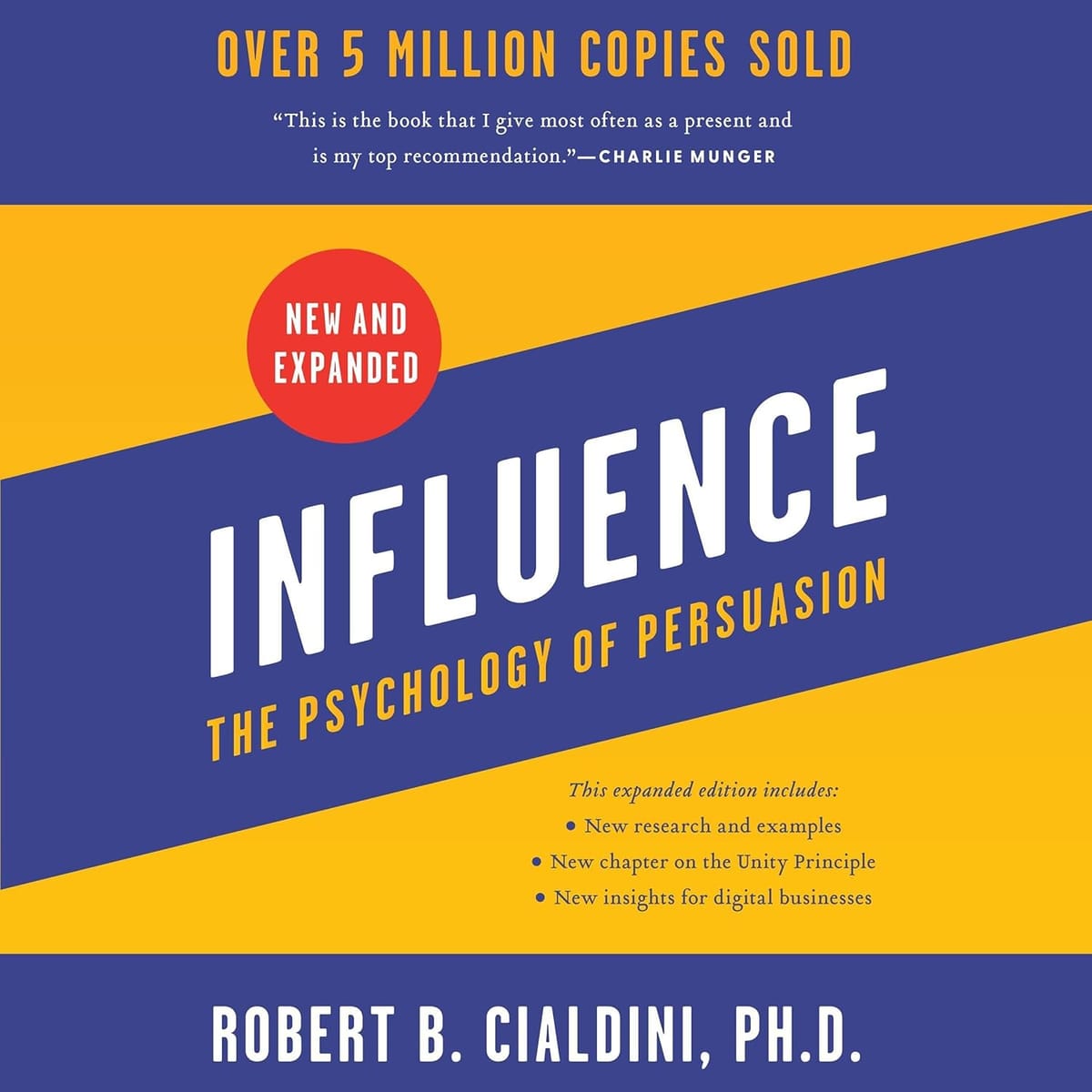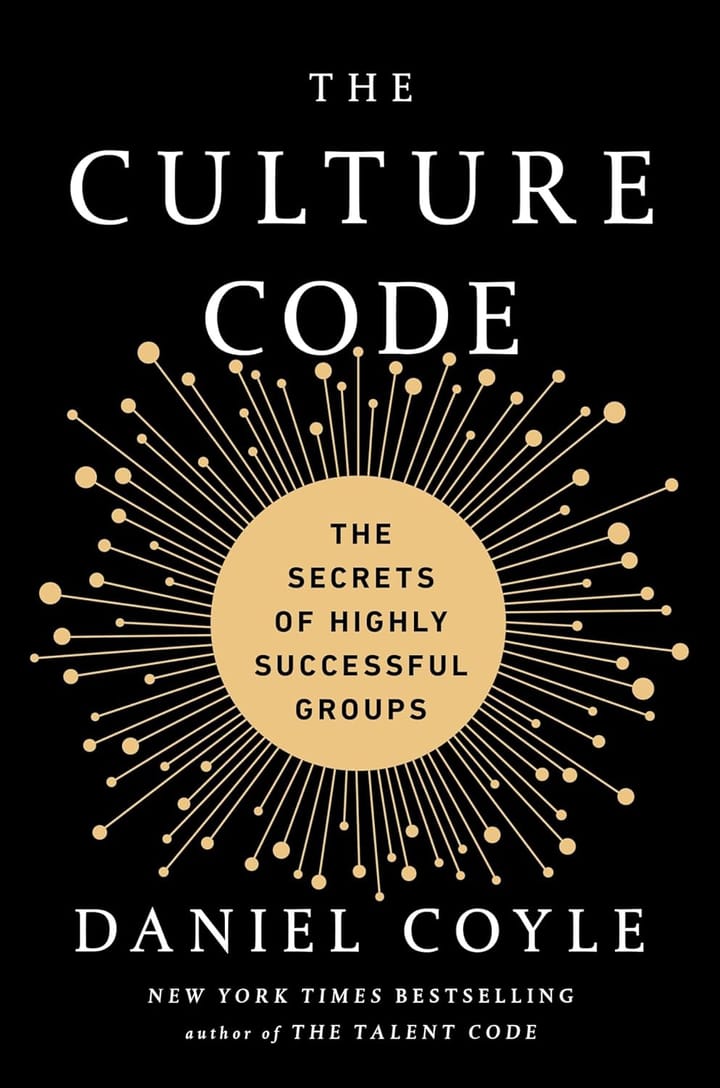Book Summary: Influence
Discover key insights from Robert B. Cialdini's book Influence and learn how to understand and utilize the principles of persuasion in everyday life.

Essential Insights
- Cialdini identifies six principles of persuasion that can be used to influence others' behavior.
- The book explores how these principles are utilized in various contexts, such as marketing, sales, and social psychology.
- Understanding these principles can help individuals become more aware of how they are being influenced and make more informed decisions.
Introduction to Influence
Robert B. Cialdini's book, Influence, is a seminal work in the realm of psychology and communication, offering valuable insights into the principles that guide human behavior. As a renowned psychologist and researcher, Cialdini delves deep into the psychology of persuasion and reveals the six key principles that influence our decision-making processes. Through extensive research and real-world examples, Influence presents a compelling examination of the strategies used to sway opinions, make impactful decisions, and navigate social interactions.
For individuals looking to enhance their leadership skills and personal development, Influence by Robert B. Cialdini serves as a beacon of knowledge and wisdom. By understanding the psychological triggers that influence human behavior, readers can gain a strategic advantage in both professional and personal settings. Whether you're a business leader seeking to improve your negotiation tactics or an aspiring entrepreneur looking to understand consumer behavior, the principles outlined in Influence offer valuable insights that can be applied to various aspects of daily life. This book is not just a guide to persuasion; it is a roadmap to cultivating meaningful relationships, fostering effective communication, and ultimately becoming a more influential and impactful leader.
Summary of Influence
Influence by Robert B. Cialdini explores the various tactics and principles that drive persuasion in human interactions. The book emphasizes six key principles: reciprocity, commitment, social proof, authority, liking, and scarcity. Cialdini illustrates how these principles are employed in everyday situations, helping readers understand the psychology behind why people say "yes." Each principle is supported by engaging anecdotes and research, making the content relatable and applicable to various contexts, particularly in leadership and personal development.
Cialdini’s work stands out because it not only explains the mechanics of persuasion but also encourages ethical considerations in the use of these strategies. He argues that understanding how influence works can empower individuals to communicate more effectively and make better decisions. The book encourages readers to reflect on their own behaviors and recognize when they might be unwittingly influenced by others. This self-awareness is a vital tool for leaders and individuals striving for personal growth, providing a fresh outlook on the ethics surrounding influence in both professional and personal relationships.
Notable ideas from Influence include the concept of reciprocity, where people feel obligated to return favors, and social proof, where individuals look to others to guide their own behaviors. These points are fundamentally important for anyone interested in enhancing their leadership capabilities and improving their ability to inspire and motivate others. By grasping the mechanisms of influence, readers can create more meaningful connections, foster effective communication, and become more persuasive in their pursuits. This foundational understanding paves the way for deeper discussions on leadership styles and personal development strategies throughout the article.
Key Lessons From Influence
Understanding Reciprocity
One of the main concepts presented in Cialdini's Influence is the principle of reciprocity. This principle suggests that people are more likely to respond positively to someone who has given them something first. Cialdini explains that even small favors can foster a sense of obligation and encourage others to return the kindness. For example, he describes a study in which waiters who provided a free mint with the bill saw a significant increase in tips, demonstrating how a simple gesture can influence behavior.
The importance of reciprocity lies in its ability to create connections and build trust. When someone feels indebted to another, it can open the door for more significant interactions, making it easier to persuade them later. This principle not only applies to personal relationships but also in professional settings where networking is crucial. By understanding how reciprocity works, readers can foster stronger relationships and become more effective in their interactions.
Recognizing the power of reciprocity can inspire individuals to be more generous and thoughtful in their dealings. By initiating goodwill, whether in the workplace or in personal life, one can create an environment conducive to collaboration and support, leading to greater success and fulfillment.
The Power of Commitment and Consistency
Cialdini emphasizes the importance of commitment and consistency in influencing behavior. Once people commit to an idea or course of action, they are more likely to stick to it, even when circumstances change. He illustrates this through a study where homeowners who agreed to display a small sign in their yard were much more likely to later accept a larger sign without hesitation. This commitment, however minor, led to a stronger inclination toward further compliance.
This principle is significant because it reveals how small commitments can lead to larger actions. Understanding the mechanism behind this can empower readers in various contexts, from marketing their ideas to fostering teamwork in organizations. By encouraging small commitments, individuals can guide others toward bigger decisions, facilitating smoother processes and encouraging acceptance of larger proposals.
Applying the concept of commitment can encourage personal growth. Readers can leverage it by setting small goals that gradually lead to larger aspirations. By making initial commitments, individuals can create a momentum that drives them towards greater achievements, enhancing their discipline and persistence.
Social Proof as a Persuasive Tool
The concept of social proof revolves around the idea that people tend to look to others for guidance on how to behave in uncertain situations. Cialdini uses various examples including how crowds influence individuals' choices, such as the popular practice of choosing restaurants based on how busy they are. One example he shares involves a hotel that included information about other guests reusing towels, which significantly increased the participation rate in their environmental initiative.
Social proof is a powerful concept in marketing and communication. It serves as a reminder of the herd mentality that often dictates choices, making it crucial to understand when to leverage this phenomenon. By incorporating social proof into strategies, individuals and organizations can enhance their appeal, increase trust, and influence behavior more effectively.
Authority and Its Influence
In Influence, Cialdini discusses the principle of authority, noting that people tend to comply with requests from perceived experts or authority figures. He presents the famous Milgram experiments, which demonstrated how individuals were willing to administer what they believed were harmful electric shocks when instructed by someone in a position of authority. This highlights how powerful the influence of authority can be and the ethical considerations that come with it.
Understanding the role of authority in persuasion can empower readers to be mindful of their own influence and how they position themselves within various contexts. This principle underscores the importance of credibility and expertise, suggesting that establishing oneself as a reliable source can significantly enhance persuasive efforts—whether in personal relationships or in professional realms.
Application Ideas for Influence
Embrace Reciprocity
One of the key principles discussed by Cialdini is the idea of reciprocity—the tendency for people to want to return favors. To apply this in your life, start by initiating small acts of kindness toward others, whether it’s offering help, providing compliments, or sharing resources without an immediate expectation of something in return. By doing so, you create a social obligation that encourages others to reciprocate.
In a leadership role, this principle can be particularly powerful. Consider recognizing your team members’ contributions publicly or providing assistance when they face challenges. This not only fosters a positive environment but also keeps morale high. When your team feels appreciated and supported, they are likely to reciprocate with increased motivation and loyalty.
To ease the process of implementing reciprocity, make it a habit to acknowledge others regularly. Set a goal to compliment or appreciate at least one person each day. This can bolster your relationships and create a culture of mutual support. An additional actionable idea is to host team-building events where everyone shares their successes and challenges, enhancing the sharing spirit. For instance, a manager who regularly praises team achievements can spark an ongoing cycle of goodwill, fostering a collaborative team spirit.
Utilize Social Proof
Social proof refers to the tendency for individuals to look to others when making decisions, especially in uncertain situations. One way to apply this in everyday life is to make your choices visible to others. For example, if you’re passionate about healthy eating, share your meals on social media. Seeing your choices can encourage friends to make healthier decisions themselves.
In a professional setting, you can leverage social proof by showcasing testimonials or case studies. When trying to persuade stakeholders or team members about a new project, highlight successful examples from similar organizations or individuals who have taken similar paths. This not only builds credibility but also places your ideas within a framework others find acceptable.
To further strengthen the impact of social proof, gather and share data on positive outcomes from proven behaviors within your community or workplace. For example, consider incorporating shared metrics around productivity to encourage best practices among your team. An actionable idea might be setting up a shared project board where team members can showcase their achievements. A company that highlights employee success stories in their newsletters can foster motivation and engagement among staff, encouraging a culture of performance.
Apply Authority Tactics
Cialdini points out that authority can significantly influence people's choices. To implement this, start by positioning yourself or your ideas in a way that highlights your expertise or credibility. For instance, if you are launching a new initiative at work, ensure you clearly communicate your qualifications and past successes related to the task at hand.
In leadership, it’s essential to ensure that you're not only perceived as an authority but also genuinely embody expertise in relevant areas. Regularly updating your skills or knowledge can further enhance this perception. Consider establishing a mentorship relationship with newer team members, where your guidance can serve as an implicit endorsement of your authority.
An effective way to solidify this aspect is to share credible endorsements or recommendations. For instance, if previous clients laud your services, regularly display these as supporting evidence of your expertise. An actionable idea could include hosting workshops or webinars to demonstrate competence and build connections. A team leader who invites external experts to speak can enhance their team's respect and engagement, creating a learning atmosphere and reinforcing their authority.
Leverage Commitment and Consistency
People tend to align their actions with their commitments, particularly when these commitments are made publicly. To leverage this principle, encourage yourself and others to articulate goals or commitments clearly. For example, if you want to lose weight, tell family or friends about your goal. This public declaration makes it more likely that you will follow through on the commitment.
In the workplace, you can foster a culture of commitment by encouraging your team to set collective goals. When everyone is on board, they are more likely to hold each other accountable. A simple meeting where goals are discussed and documented can serve as a great tool for ensuring that team members stay on track with their commitments.
To facilitate easier application of this principle, consider creating a visual board where team members can post their commitments and progress. This not only serves as a reminder but also encourages mutual support. An additional actionable idea is to use follow-up check-ins to discuss progress and obstacles openly. A project team that regularly reviews its commitments can significantly increase accountability and productivity, pushing each member towards achieving shared goals.
Concluding Thoughts
The article provides an overview of Robert B. Cialdini's influential work, Influence, which delves into the key principles that govern persuasion and compliance in human interactions. The emphasis is placed on six fundamental principles: reciprocity, commitment, social proof, authority, liking, and scarcity. These principles are illustrated through relatable anecdotes and research findings that demonstrate their applicability in both personal and professional settings. Readers are encouraged to explore the significance of each principle, such as how reciprocity fosters connection and trust, and how commitment can lead to greater compliance with initially small requests.
Cialdini's emphasis on social proof highlights how people often look to others when making decisions, making this principle invaluable in marketing and team dynamics. The authority principle stresses the impact of perceived expertise and how it can be harnessed to bolster credibility in various situations. Beyond merely detailing these tactics, Cialdini advocates for ethical considerations in applying influence. The article highlights the importance of being aware of these strategies in personal behavior, encouraging self-reflection and mindfulness to avoid being manipulated by others. This self-awareness is especially beneficial for leaders and individuals pursuing personal development, as it enhances their ability to inspire and motivate others. As the discussion of Cialdini’s principles unfolds, readers are inspired to adopt practical strategies in their everyday lives. From initiating acts of kindness to establishing oneself as an authoritative figure in a professional setting, the actionable ideas presented aim to empower individuals to forge stronger relationships and enhance their influence effectively.
As you reflect on the insights provided in this article, consider diving deeper into Influence by Robert B. Cialdini. The lessons gleaned from this book not only hold the potential to improve your persuasive skills but also to cultivate an ethical approach to influence in your personal and professional interactions. Embrace these principles, apply them in your life, and witness the positive impact they have on your relationships and your ability to lead effectively.
Related Topics
- Social Psychology - The study of how individuals are influenced by the presence and actions of others.
- Persuasion Techniques - The methods used to convince someone to adopt a certain belief or take a specific action.
- Consumer Behavior - The study of how individuals make decisions about what they buy, use, or dispose of.
- Marketing Strategies - The planned approach to promoting and selling products or services to consumers.
- Behavioral Economics - The study of psychological, cognitive, emotional, cultural, and social factors that influence economic decisions.
Reflection & Discussion Questions
Reflection is a powerful tool for personal growth and leadership development. Whether you're exploring your own experiences or engaging in thoughtful group discussion or team training, reflection questions help uncover new insights, clarify values, and inspire meaningful action. Below are questions designed to deepen your understanding of the concepts taught in Influence, and facilitate constructive conversations with your team or group.
- How can you apply the principle of reciprocity in your personal and professional relationships to build trust and create meaningful connections?
- Reflect on a time when you were influenced by social proof. How did it impact your decision-making process, and how can you leverage this concept in your leadership role?
- How do you currently use authority to influence others in your daily interactions, and how can you enhance your credibility to become a more effective leader?
- Think about a commitment you made that led to consistent actions. How can you encourage yourself and others to set and achieve goals by leveraging the principle of commitment?
- Consider a situation where you felt obligated to return a favor. How can you initiate acts of kindness and goodwill to create a culture of reciprocity in your team or community?
- How can you showcase testimonials or case studies to build credibility and persuade others to adopt your ideas? In what ways can social proof enhance your influence in professional settings?
- Reflect on a time when you followed through on a commitment after making it publicly. How can you encourage transparency and accountability within your team to uphold shared goals?
- How can you position yourself as an authority figure in your field by demonstrating expertise and continuously updating your knowledge and skills?
- Think about a time when you were influenced by the principle of commitment and consistency. How can you create a visual representation of goals and progress to encourage accountability and mutual support in your team?
- Consider a scenario where you were swayed by an authority figure. How can you use this knowledge to ethically influence others and foster trust in your leadership approach?
- How can you leverage the principle of liking to build rapport and foster positive relationships with your team members or peers?
- Think about a situation where you sought social proof before making a decision. How can you incorporate success stories and endorsements to inspire others and facilitate collective change?
- Reflect on a time when you felt compelled to reciprocate a favor. How can you initiate acts of kindness in your daily interactions to create a culture of generosity and collaboration?
- How can you encourage others to commit to collective goals by facilitating open discussions and follow-up check-ins to ensure progress and accountability?
- Consider how understanding the principles of influence can empower you to communicate more effectively and make better decisions in various aspects of your life. How can you apply these principles to enhance your leadership capabilities and personal development journey?
Recommended Reading
Below are a few recommended books related to concepts taught in Influence.
- Pre-Suasion by Robert B. Cialdini. A book that explores the art of persuasion and how to effectively influence others before making the actual request.
- Thinking, Fast and Slow by Daniel Kahneman. An in-depth look at the two systems of thinking and how they impact decision making and judgment.
- Nudge: Improving Decisions About Health, Wealth, and Happiness by Richard H. Thaler and Cass R. Sunstein. This book discusses how small changes or "nudges" can influence people's choices and behaviors in positive ways.
Frequently Asked Questions
What are the factors that influence our decision making?
Cialdini outlines six key principles that influence our decision making: reciprocity, commitment/consistency, social proof, authority, liking, and scarcity. These principles are based on psychological triggers that affect how we perceive and respond to situations, ultimately influencing our behavior and choices.
What is the principle of commitment and consistency in influencing others?
The principle of commitment and consistency states that once individuals commit to a certain idea or goal, they are more likely to comply with requests that are consistent with their prior commitment. This principle relies on the concept of cognitive dissonance, where individuals seek to reduce the internal conflict caused by holding contradictory beliefs or behaviors. By gaining an initial commitment from individuals, you can effectively leverage their desire to remain consistent with their previous choices. This principle is powerful in influencing behavior and decision-making.
What is the principle of social proof?
Social proof is the idea that people will conform to the actions of others under the assumption that those actions are reflective of the correct behavior. This principle is rooted in the belief that if many others are doing something, it must be the right thing to do. Social proof can be seen in various aspects of daily life, from the popularity of certain products to the behavior of crowds during emergencies.
What are some examples of the principle of scarcity in action?
Scarcity is a powerful tool of influence, and there are countless examples of it in marketing and sales. Some common tactics include limited time offers, exclusive deals for VIP customers, and creating a sense of urgency by emphasizing that there are only a few items left in stock. By making something seem rare or hard to obtain, people are more likely to want it simply because they fear missing out on the opportunity.
Affiliate Disclaimer
Some of the links on this website may be affiliate links. This means that, at no additional cost to you, we may earn a commission if you click through and make a purchase. Your support through these affiliate links helps sustain and improve the quality of the content we provide.



